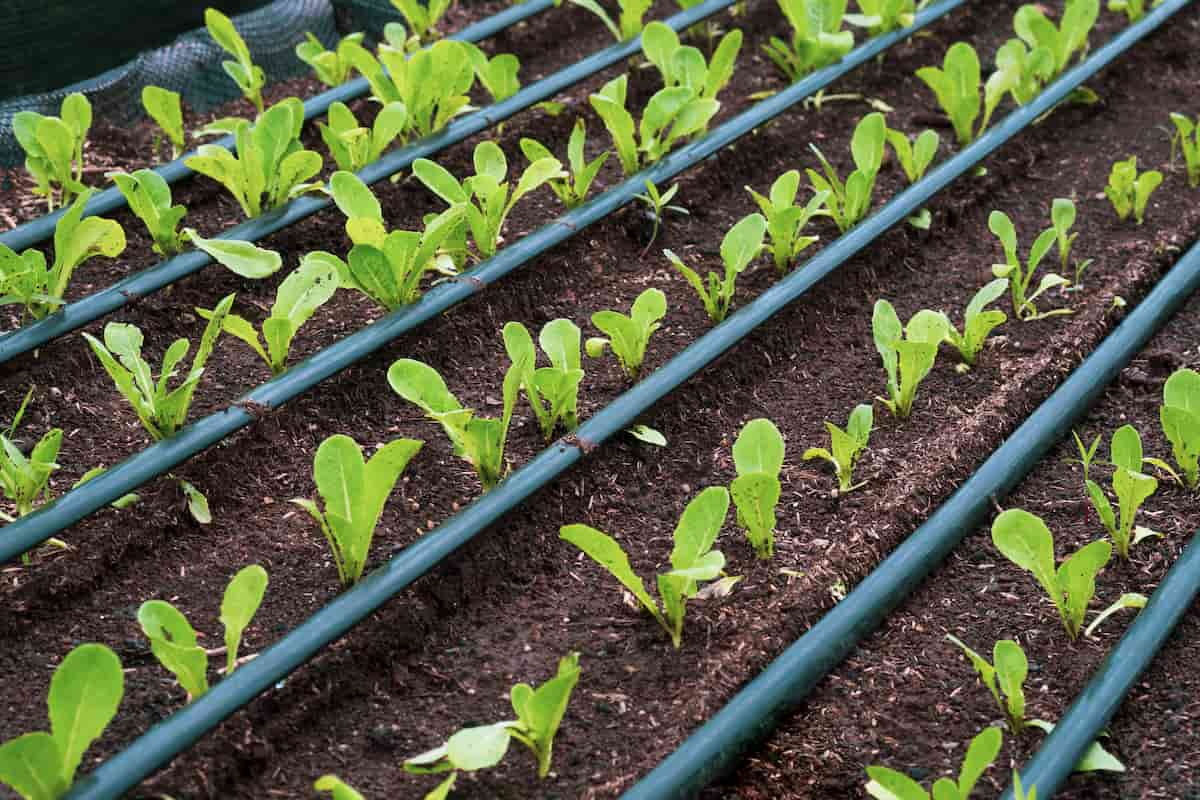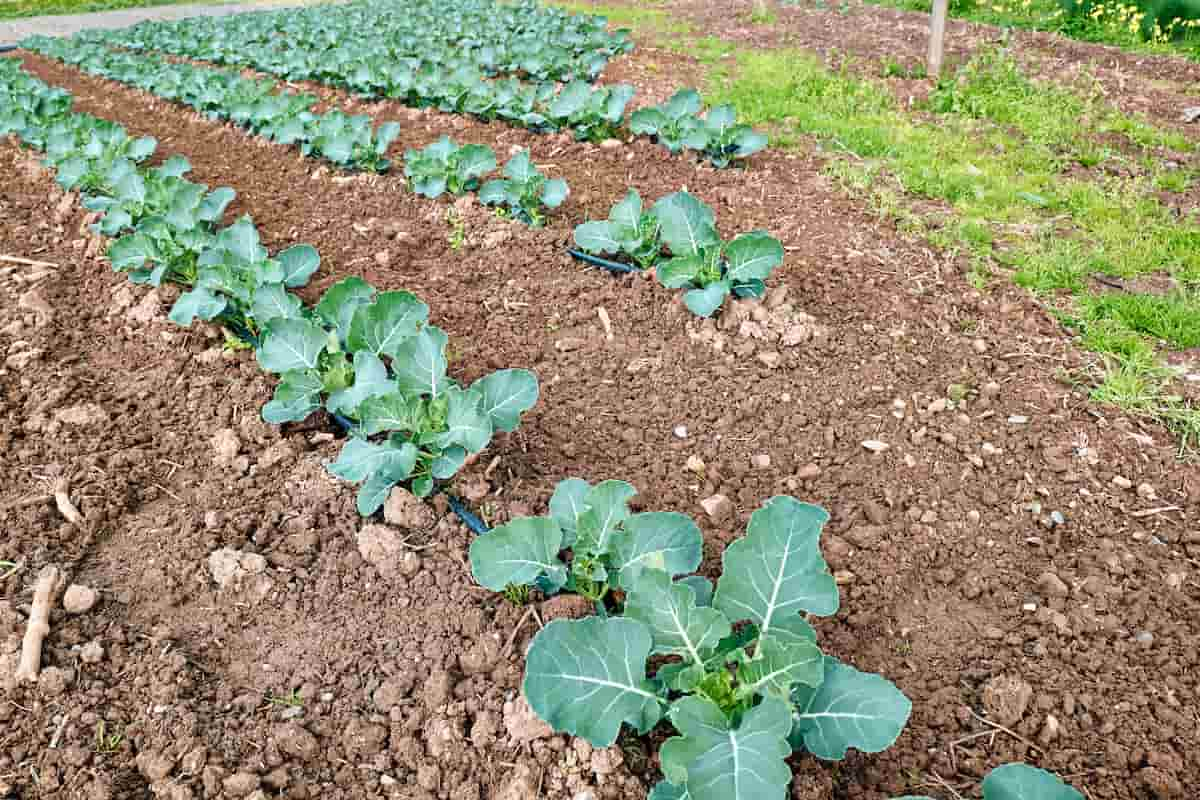Drip irrigation, also known as trickle irrigation, is a highly effective micro-irrigation system that can save water and nutrients by delivering water slowly and directly to the roots of plants. This can be done either from above the soil surface or by burying the pipes underground. The primary goal of drip irrigation is to minimize water loss due to evaporation and to deliver water directly to the root zone of plants. One of the key benefits of drip irrigation is that it is a cost-efficient solution for small-scale farmers.

The setup process is relatively simple, and the technology allows farmers to manage the precise location, pressure, timing, and quantity of water flow. This increases efficiency and can lead to a 50% improvement in productivity while using only 10% of the water traditionally required for irrigation. However, drip irrigation is most commonly used for trees and shrubs that do not require soil plowing. Drip irrigation also reduces water leakage into the soil, minimizes over-flooding, and reduces weed germination.
Components Used in the Drip Irrigation System
The drip irrigation system comprises components such as the water pump and prime mover, control head or control system, distribution lines, and filters. The water pump and prime mover ensure the water supply at a specific pressure from the source, and the control head regulates water supply, pressure, filtration, and nutrient addition.
The system uses the screen, media, disk, and centrifugal filters, to clean water from suspended impurities. The distribution lines carry water from the main and sub-main lines to the lateral lines, feeding water to crops. Flexible materials like PVC or plastics are typically used for the main line, while the lateral lines may be on either side or only one side of the crop rows.
Horticulture Crops Grown Under Drip Irrigation
Drip irrigation is a type of micro-irrigation system that delivers water directly to the root zone of plants in small, frequent doses, resulting in increased water use efficiency and improved plant growth.
- Fruits and vegetables: Tomatoes, cucumbers, peppers, eggplants, melons, strawberries, grapes, and citrus are among the most grown fruits and vegetables under drip irrigation. These crops require frequent and precise irrigation to produce high-quality and high-yielding crops.
- Ornamental plants: Drip irrigation is commonly used to grow ornamental plants such as roses, carnations, chrysanthemums, and gerbera. These plants require a consistent supply of water to produce high-quality flowers and foliage.
- Nursery crops: Drip irrigation is also commonly used in nurseries to grow container plants, trees, and shrubs. These crops require precise watering to establish healthy root systems and promote overall plant growth.
Top 15 Benefits of Drip Irrigation in Horticulture
Increase in Plant Growth and Yield
Drip irrigation maintains a more consistent soil moisture content in the root zone, which can lead to increased crop yields. This is due to the optimum soil moisture and temperature, improved aeration, and better root development provided by frequent and precise water application. In addition, the distribution of water along rows and the ability of drip irrigation to hold water in heterogeneous soils can positively impact plant growth. Drip irrigation can also improve crop health and yield by reducing disease factors.
Improved Fertilizer and Other Chemical Application
Drip irrigation is highly effective for fertilizer application in many crop production scenarios. This is due to the ability of drip irrigation systems to apply fertilizer frequently and precisely throughout the plant’s growth stages to its water requirements. By applying fertilizer in this way, drip irrigation minimizes the risk of runoff or leaching losses, ensuring that plants receive the optimal amount of nutrients.
Restricted Weed Growth by Drip Irrigation
Drip irrigation effectively restricts weed growth due to its targeted water application. As it only irrigates a portion of the soil surface, weeds can only grow over part of the area. Additionally, drip irrigation systems filter the water, which prevents many weed seeds from entering the field in the first place. This reduces weed growth, which reduces the need for weeding and helps conserve soil moisture and nutrients for the plants.
No Soil Erosion by Adopting Drip Irrigation System
Drip irrigation effectively prevents soil erosion using less water than conventional irrigation methods, preventing excess water runoff. As a result, the likelihood of soil erosion is reduced. With less soil erosion, soil quality can be preserved, making it an environmentally friendly and sustainable irrigation method. Overall, drip irrigation can conserve water and protect the soil from erosion.
Easier Pest Control by Adopting Drip Irrigation System
Drip irrigation can make pest control easier and more efficient as it provides better access to the field and keeps the foliage and soil surface dry. Dry plants and fruits also reduce the occurrence of pests and diseases, making it easier to control them. Drip irrigation can improve crop yields and quality by reducing the need for chemical treatments and promoting plant health.
Conservation of Water by Adopting Drip Irrigation
Drip irrigation is an efficient method that requires less water than conventional methods. However, the water saved depends on several factors, such as the crop, soil type, environmental conditions, and management practices. With proper management, drip irrigation can save 30 to 60 percent water compared to other methods. Lower evaporation losses, even water distribution in the root zone, minimal percolation losses, and reduced weed growth.
In case you missed it: Top 10 Benefits of Sprinkler Irrigation in Horticulture

Labor Saving by Adopting Drip Irrigation
However, for the system to operate at low labor input, it must be properly designed, correctly installed, and supplied with good-quality filtered water. In countries with limited labor availability and high costs, the labor savings of drip irrigation can be particularly attractive. Farmers can eliminate the need to construct borders, bunds, and other labor-intensive works associated with conventional irrigation, leading to 60-90% labor savings.
Healthier Foliage by Adopting Drip Irrigation
Drip irrigation is beneficial for plant health as it prevents the leaves from staying wet for prolonged periods. In contrast, overhead watering can result in wet leaves, which can cause discoloration and spotting. The plants’ leaves remain dry with drip irrigation, reducing the risk of fungal diseases and other problems associated with wet foliage.
Crop Protection by Adopting Drip Irrigation
Drip irrigation prevents fungus spread, such as powdery mildew, which can thrive on wet leaves. Drip irrigation reduces the risk of fungal diseases by keeping the foliage dry, leading to healthier plants and higher yields.
Usage of Recycled Water by Adopting Drip Irrigation
Drip irrigation can safely use recycled non-potable water, such as rainwater or wastewater, for irrigation purposes. The method’s efficient water use and targeted application reduce the risk of soil contamination, making it a suitable choice for sustainable farming practices.
Ability to Use Saline Water in Drip Irrigation System
Drip irrigation systems apply water frequently to keep soil salinity diluted and below the damage threshold, unlike conventional methods where soil moisture content fluctuates greatly. This leads to salt accumulation on the side and under the plant’s root zone, causing damage. Rain, with a depth of 20-30 cm, can flush these soil deposits from the field, preventing salt buildup and ensuring the health of the plants.
Using Poor Soils More Effectively in Drip Irrigation Systems
Drip irrigation effectively uses poor soils that other conventional methods cannot rinse. Surface irrigation is not feasible for light soils, as percolation loss will be high. Similarly, sprinkler irrigation is unsuitable for heavy soils due to low infiltration rates. Drip irrigation works well in both cases as it delivers water directly to the root zone, reducing water loss from percolation and evaporation.
Flexibility and Easier to Change Drip Irrigation Systems
Drip irrigation systems offer flexibility as the spacing of drippers, and laterals can be adjusted and shifted easily in the same or other fields.
The Versatility of Drip Irrigation
Drip irrigation is a versatile system that can be utilized in various environments and crops, such as gardens, vineyards, greenhouses, and row crops. It can be installed in existing or new landscapes and accommodate different terrain types, including hillsides or flat areas. The system is also known for its stable and adaptable features.
Easy Field Operations
Drip irrigation allows for continuous field operations during irrigation since the areas between the rows remain dry, which facilitates harvesting and other agricultural operations.
In case you missed it: How to Start a Dried Flower Business: A Profitable Horticulture Idea

Conclusion
Drip irrigation is a highly efficient and beneficial method of irrigating crops in horticulture. It can save water, reduce labor costs, prevent soil erosion and disease, and enhance plant growth and yield, among other advantages. Overall, drip irrigation is a versatile and sustainable solution for modern agriculture.
- Feed Your Flock for Less: Top 10 Tips to Save on Chicken Feed
- Ultimate Guide to Ossabaw Island Hog: Breeding, Raising, Diet, and Care
- Hatching Answers: The Top 10 Reasons Your Chickens Aren’t Laying Eggs
- Eggs and Economics: Breaking Down the Cost of Raising Backyard Chickens
- Defend Your Greens: Proven Methods to Keep Iguanas Out of Your Garden
- Ultimate Guide to Cinnamon Queen Chicken: A Comprehensive Guide for Beginners
- Ultimate Guide to California Tan Chicken: Breeding, Raising, Diet, Egg-Production and Care
- Ultimate Guide to Marsh Daisy Chicken: Breeding, Raising, Diet, and Care
- 10 Types of Chicken Farming Businesses You Can Start for Profits